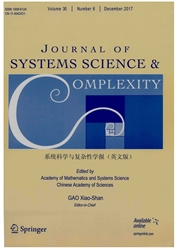

 中文摘要:
中文摘要:
斯坦利·米尔格拉姆斯小世界实验介绍我们的世界的分离的六度。仍然难倒我们的实验的一现象是个人与他们的特征与社会网络信息操作能怎么样在发现短链很擅长。这个问题焦点上的以前的工作是否在在一个给定的网络的航行的方法上,或在另外的信息的效果上组织到寻找的过程。在这份报纸,作者强调网络建筑学的生长和形状是紧与个人有关属性。作者介绍一个方法重建节点亲密度基于本地相互作用。然后,我们提供基于的亲密为在网络的取向的途径。作者发现在社会网络的有效搜索的基本原因是每个节点的亲密的度指数地与他们的最短的路径的长度腐烂。同时,模型能解释在真实世界的实验被观察的中心限制。
 英文摘要:
英文摘要:
Stanley Milgram's small world experiment presents "six degrees of separation" of our world. One phenomenon of the experiment still puzzling us is that how individuals operating with the social network information with their characteristics can be very adept at finding the short chains. The previous works on this issue focus whether on the methods of navigation in a given network structure, or on the effects of additional information to the searching process. In this paper, the authors emphasize that the growth and shape of network architecture is tightly related to the individuals' attributes. The authors introduce a method to reconstruct nodes' intimacy degree based on local interaction. Then we provide an intimacy based approach for orientation in networks. The authors find that the basic reason of efficient search in social networks is that the degree of "intimacy" of each pair of nodes decays with the length of their shortest path exponentially. Meanwhile, the model can explain the hubs limitation which was observed in real-world experiment.
 同期刊论文项目
同期刊论文项目
 同项目期刊论文
同项目期刊论文
 期刊信息
期刊信息
